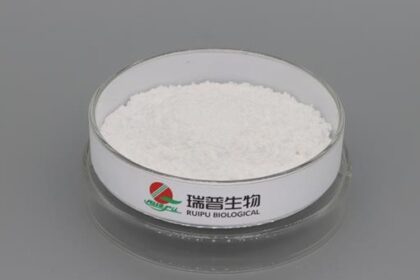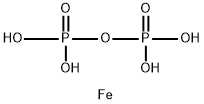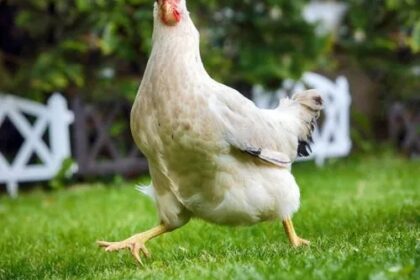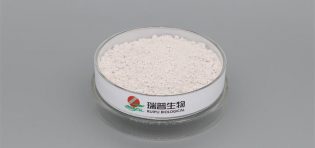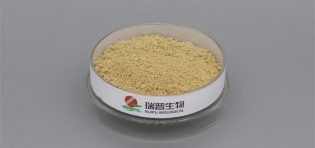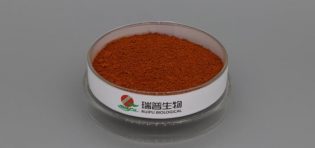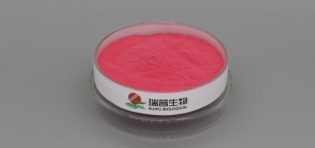
Ferrous gluconate, as a commonly used organic iron supplement, is widely applied in food, nutritional health products, and pet food. The safety of its long-term use needs to be comprehensively evaluated from both human and animal perspectives, considering dosage, metabolic characteristics, and potential risks.
I. Safety Analysis of Long-Term Use in Humans
In the field of human nutritional fortification, ferrous gluconate is often used for preventing and treating iron-deficiency anemia. The safety of its long-term use has been supported by numerous studies, but attention should be paid to dosage and individual differences:
Metabolism and accumulation risk: Iron ions in ferrous gluconate are actively absorbed through the intestines, and the absorption process is regulated by the body's iron reserves — when the body has sufficient iron, the absorption rate naturally decreases (usually below 10%), reducing the possibility of excessive accumulation. Compared with inorganic iron (such as ferrous sulfate), its dissolution and absorption in the intestines are milder, and it is less likely to cause mucosal damage or constipation due to the massive accumulation of unabsorbed iron in the intestines. When used long-term (daily dose ≤60mg elemental iron), the incidence of adverse reactions is significantly lower than that of inorganic iron.
Dosage-related adverse reactions: Long-term excessive use (e.g., daily elemental iron intake exceeding 100mg) may cause gastrointestinal discomfort (such as nausea, diarrhea, abdominal pain), which is related to iron ions stimulating the intestinal mucosa and promoting intestinal peristalsis. In addition, excessive iron may increase the risk of oxidative stress through free radical mechanisms, especially for people with liver dysfunction, who need to use it with caution to avoid iron accumulation in the liver causing damage.
Safety in special populations: Pregnant women, lactating women, and children are key groups for long-term iron supplementation. Studies have shown that pregnant women supplementing 30-60mg of elemental iron daily (in the form of ferrous gluconate) can effectively prevent anemia during pregnancy without adverse effects on fetal development. For children, long-term supplementation requires strict dose control (daily ≤10mg elemental iron) to avoid excessive iron affecting the absorption of other trace elements such as zinc and copper.
II. Safety Considerations for Long-Term Use in Animals
In pet and livestock feed, the long-term safety of ferrous gluconate is closely related to its dosage, animal species, and physiological status:
Safety in pet applications: Pets such as dogs and cats have low iron requirements (the daily recommended amount for adult dogs is about 0.5-1mg/kg body weight). No obvious toxic reactions have been observed when ferrous gluconate is added to feed for a long time (elemental iron content ≤300mg/kg feed). However, excessive addition (e.g., more than 500mg/kg feed) may lead to iron accumulation in the liver of pets, especially for elderly pets or individuals with liver diseases. It is necessary to regularly monitor serum iron levels to avoid chronic damage.
Tolerance in livestock feed: In livestock feed for pigs, chickens, etc., ferrous gluconate is added as an iron source for a long time (usually 200-500g per ton of feed), which can improve anemia in young animals, promote growth, and no negative effects on meat quality or reproductive performance have been found. Its safety is better than that of inorganic iron because it is less likely to cause imbalance of intestinal flora in livestock or excessive iron residues in feces (reducing environmental pollution).
III. Safety Control and Consensus for Long-Term Use
Dosage control is the core: For both humans and animals, the safety of long-term use of ferrous gluconate is directly related to the dosage. Following the principle of "supplement on demand" — using it only when there is a clear iron deficiency or increased iron demand, and the dosage does not exceed 1.5 times the daily recommended amount (e.g., the upper limit of daily elemental iron for humans is 60mg, and for pets is 1.5mg per kg body weight) — can significantly reduce risks.
Synergy and taboos with other nutrients: When used for a long time, it is necessary to avoid taking it with high-calcium and high-phytate foods (which can inhibit iron absorption). It can be paired with vitamin C (to promote iron absorption), but the dosage of vitamin C needs to be controlled (daily ≤500mg) to avoid potential oxidative damage caused by over-promotion of iron absorption.
Regulatory and standard support: Food safety authorities in many countries (such as the US FDA and EU EFSA) have approved ferrous gluconate as a food additive for long-term use and set the acceptable daily intake (ADI): the ADI for humans is 0-0.8mg/kg body weight (calculated as elemental iron), and the upper limit for pet feed is set according to animal species (e.g., the EU stipulates that the total iron content in dog feed does not exceed 300mg/kg), providing a safety threshold reference for long-term use.
Ferrous gluconate has high safety when used long-term at the recommended dosage. Its mild absorption characteristics and low irritation make it suitable for long-term iron nutrition supplementation in humans, pets, and livestock. Potential risks mainly come from excessive use, manifested as gastrointestinal discomfort or iron accumulation damage. By strictly controlling the dosage, adjusting according to individual physiological status, and following relevant regulations and standards, risks can be effectively avoided. Overall, under reasonable application, ferrous gluconate is a safe and reliable iron supplement.

